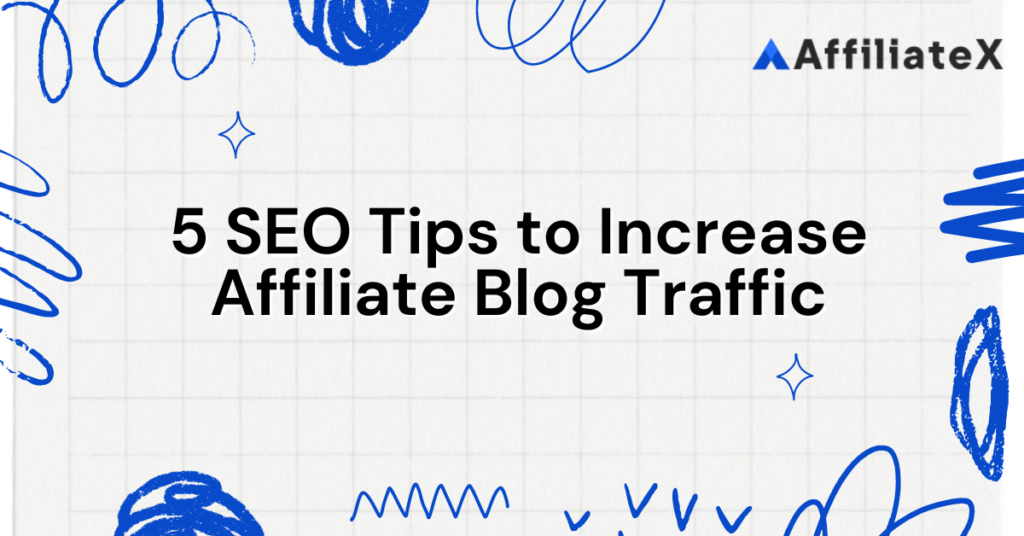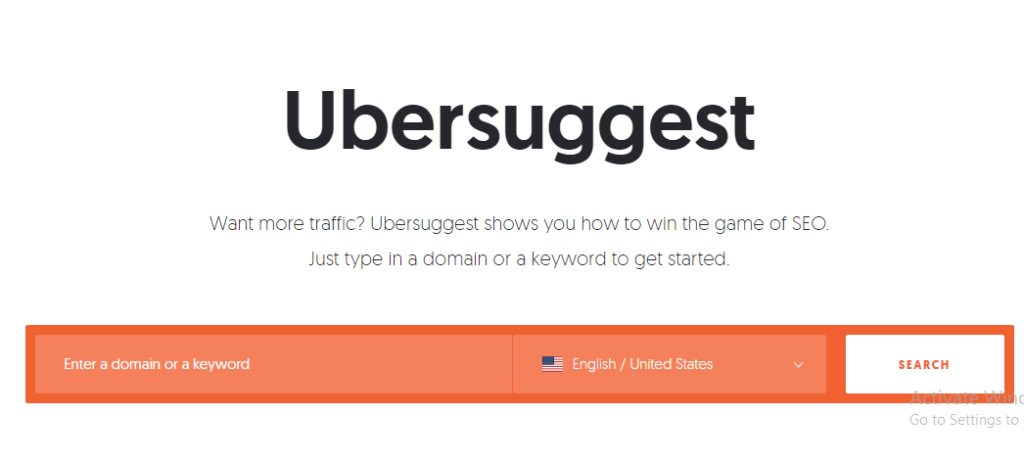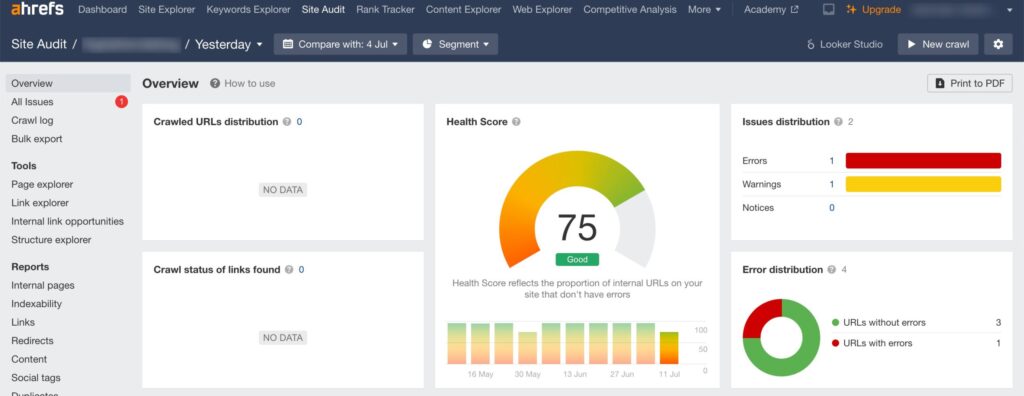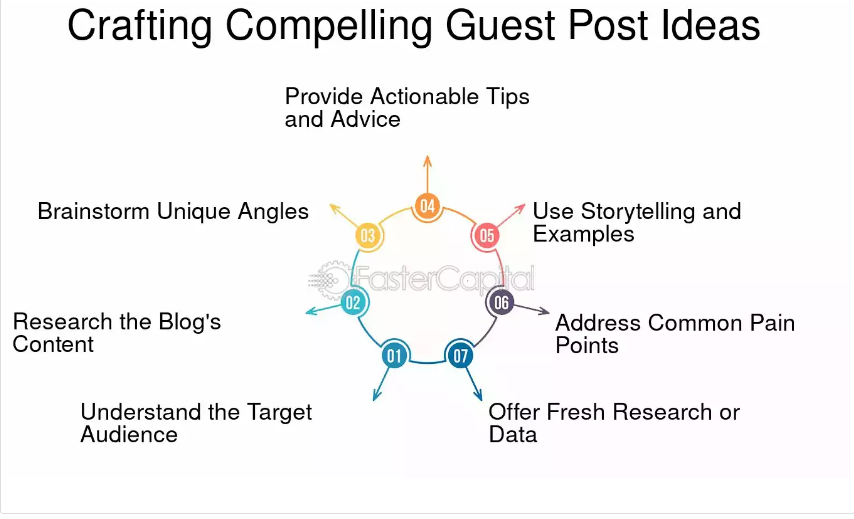5 SEO Tips to Increase Affiliate Blog Traffic

When it comes to blogs or websites, the strategy that keeps standing the test of time is search engine optimisation (SEO). For affiliate bloggers/marketers whose major sources of income stem from visitors who visit and read their blogs, and make purchases through affiliate links, SEO is a top strategy for generating affiliate blog traffic they wouldn’t want to sweep under the carpet.
As the cliche goes, “SEO is a marathon.” Even though this is true, when a good content marketing and SEO strategy is developed and implemented, you can start ranking higher on Search Engine Result Pages (SERP) with increased traffic and success in a few days.
Suppose you look forward to achieving sustainable success with your affiliate blog, these top 5 SEO tips are the starter packs you need to rank higher on search engine result pages, increase traffic, and boost your affiliate income.
What is an SEO Strategy for an Affiliate Blog?
Think of SEO strategy for an affiliate blog as a well-planned and thoughtful approach to improving traffic to an affiliate blog. This strategy involves using SEO best practices and tactics that drive the desired result including:
- Increased organic traffic
- High ranking on SERPs
- Build trust in your target audience
- Increased click-through rates on affiliate links
- Increase affiliate income
Affiliate blog SEO strategy usually includes
- Creating relevant, valuable, and keyword-focused content.
- Structuring your blog content in affiliate blocks for easier crawling by search engine bots and navigation by visitors.
- Ensuring there is a balance between monetisation and user experience.
- Maintaining a technically sound blog.
- Earning backlinks from reputable sites, etcetera.

SEO Tips to Increase Affiliate Blog Traffic
1. Create an Audience Persona and Identify Keywords
Can you start building a structure without knowing what it would be used for, or seeing the structure’s plan? Just as it will be a wasted effort, starting an affiliate blog without identifying your target audience, and the range of the common words they search for (keywords,) can frustrate your affiliate marketing efforts.
What is an Audience Persona?
An audience persona is a fictional but detailed description of your target audience. It gives you insight into your target audience’s demographics, interests, behaviours, pain points, most preferred channels of communication, and the kind of solution they sort after, among others.
A detailed audience persona further gives you insight into the format of content (listicles, how-tos, etc) that engages your target audience the most. It also helps you categorise your content based on your audience’s position on the marketing funnel (awareness stage, consideration stage, conversion stage and retention).
As an affiliate blogger, who promotes a variety of products, it will give you insight into the kind of product information visitors are seeking about a particular product; it will determine whether you do a price comparison post, a product review post or a post sharing your verdict about the product.
How to Create an Audience Persona for an Affiliate Blog
Here is how to easily create an audience persona for your affiliate blog to ensure targeted blog posts that generate traffic and drive the desired result:
- Get a good understanding of the affiliate products you promote.
- Identify the potential customers.
- Use surveys, social media or competitor analysis to know customers’ perceptions of the products.
- Identify the products’ unique selling points (USPs) and customers’ pain points.
- Develop audience persona for the respective products.

The Importance of Identifying Keywords
Keywords are typically words or phrases your ideal audience will input in “ search bars” to find information about products or services you are promoting on your affiliate blog. Identifying your target keywords saves wasted efforts and speeds up your success in ranking well on search engine result pages.
Having the right keywords helps you create content that resonates with your target audience, and ranks well on search engines. Tools like SEMrush, Ahrefs, Google Keyword Planner, Ubersuggest, and MOZ are among the most effective keyword research tools that help you find low-competition and high-volume keywords.
A study by Backlinko shows that websites that get to the first page of Google results pages, get up to 92% search traffic, while the #1 ranking website gets up to 33% clicks. These statistics show the reward of identifying the right keywords (keyword research) for your affiliate blog. This is a foundational strategy for generating traffic to an affiliate blog.

2. Audit Your Affiliate Blog/Website’s SEO
A blog’s SEO audit is the process of identifying errors or gaps and evaluating the state of your website’s performance in search engines. An audit lets you know how your content is optimised to rank well, how the structure of the website influences traffic, and what you are doing wrong or well.
A website’s SEO is beyond the regular on-page and off-page SEO. Most affiliate bloggers are often caught in the web of neglecting technical SEO, while only focusing on on-page and off-page SEO.
Technical SEO is an aspect of SEO that ensures your website or blog is easily crawled and indexed by search engines effectively. This is because you can create a well-optimised blog post but may not rank because something on the website is preventing it from being indexed. This is why a regular website audit is necessary to ensure your site is accessible and functioning properly.
What Does an SEO Audit Examine?
An SEO audit examines various aspects of a website. These include:
On-page SEO
This identifies errors in meta descriptions, URLs, Keyword density, blog content structure, omitted alt text, title tags, etc. WordPress SEO plugins like Rankmath, Google Search Console, and Yoast SEO are good auditors.
Using affiliate blocks in your content can reduce the most common errors when structuring content and product descriptions. This ensures your blog posts are engaging, more valuable, and doing well on search engine results pages.

Technical SEO
An SEO audit can identify some technical SEO lapses associated with XML Sitemaps, site indexing, site mobile responsiveness, meta robots, HTTPS authenticated and site speed. With Google stating that website loading speed is an important factor for ranking a website higher, it is important to emphasise it. If you need a WordPress Developer who can handle technical needs you can always look for a freelancer at Codeable.
Off-Page SEO
Though off-page SEO is nothing like technical and on-page SEO, a good audit can help you identify the practices you are doing wrongly concerning off-page optimisation. Off-page practices like building quality backlinks, guest posting, influencer outreach, competitor backlinks analysis, social media shares, online reviews, and public relations can be placed in order of priority depending on their level of alignment, and influence on the overall success of the blog.
Tools and WordPress Plugins for Affiliate Blog SEO Audit
Here are various affiliate website SEO audit tools you can use:
- Rank Tracker for WordPress
- All In One SEO (AIOSEO)
- Google Search Console
- MonsterInsights
- Ahrefs
- Semrush
- SpyFu
- Raven Tool
- SMOKEY

3. Create Valuable, Relevant, & SEO-Friendly Content
Google ranks blog posts based on how valuable they are to searchers. This is to ensure that websites with more quality and valuable content get a better share of traffic compared to those with less valuable or just keyword-stuffed content.
Valuable and relevant content answers searchers’ queries. As an affiliate blogger/marketer, you must ensure your blog posts answer relevant questions and provide genuine solutions. This is where value-driven content meets SEO.
Here are some blog post best practices to ensure your content is relevant and valuable to your readers:
Utilising Latent Semantic Indexing (LSI) keywords
Latent semantic indexing keywords are words or phrases related or similar to your primary keywords that help search engines understand the context of your content. An important aspect of creating SEO-friendly content is utilising LSI keywords.
Here is a case study: if your primary keyword is “best professional cameras” your LSI keywords can include, “top-rated professional cameras,” “recommended professional cameras,” the list goes on.
Another benefit of LSI is minimising keyword stuffing. Keyword stuffing is overly using your main keyword in a blog post; you see it being used over and over again. This reduces the chances of Google ranking your website and affects the user experience reading the article.
Generally, using LSI keywords improves your chances of ranking for your main keyword and a variety of similar or related searches.
Properly Structuring Your Affiliate Blog Posts
A good blog post structuring allows the Google bot to crawl and easily understand what the article is about. Proper blog post structuring involves using headings, subheadings, images and lists (ordered or unordered) to section your article. This does not only enhance readability. It also improves your chances of getting the content ranked faster.
In affiliate blogging where product descriptions, features, images, and reviews are shared, structuring isn’t limited to headings, subheadings or lists. Using and placing blocks that are relevant to the product description and features to enhance sales is significant.
It’s important to use affiliate product blocks that can be easily added to the article, without affecting its intended structure. AffiliateX plugins come with a variety of blocks for different kinds of product descriptions, features, pros and cons, verdicts, and reviews, among others.

4. Use Linking Best Practices
After writing an engaging and valuable article, don’t allow bad linking practices to frustrate your effort. Internal and external linking are two of the most effective SEO linking practices often overlooked by affiliate bloggers.
Properly and naturally placed internal and external links provide valuable information to readers and signal to search engines that your content is well-researched and written.
What are these linking best practices that can increase your affiliate blog traffic? Let’s learn about them below.
Ways to Properly Place Affiliate Links in Blog Posts
In-Text
This involves hyperlinking keywords that are relevant to the product or service you’re promoting within the body of your content. Ensure you scarcely place these links in the article to avoid Google bot tagging them as spam.
Product Reviews/Verdicts
Write honest, comprehensive reviews, and embed your affiliate links within the review. For example, you could use AffiliateX’s Product Comparison Table, Pros and Cons, or Verdict block that comes with an affiliate link placement button while providing a written and visual representation of your opinion.
Listicles
Blog posts that are listicles like, “Top Email Marketing Software in 2024” offer natural opportunities to embed affiliate links to products while writing about them.
Banners/Notice
Another natural way of placing links is embedding them in banners or notices on your blog. Notice blocks can be placed at any part of your article. It allows you to show discounts and offers to your readers either on that product or other products you are promoting.

5. Publish Guest Posts
As an affiliate blogger, guest posting is one of the great ways to build backlinks, establish authority in your niche, and increase your blog’s traffic. When you contribute high-quality guest posts to authoritative blogs, you get exposure to a broader audience and earn valuable backlinks that improve your site’s domain authority and ranking on search engine result pages.
Another benefit of guest posting in increasing a website’s traffic is that it usually includes a bio or author section where you can link back to your blog, to provide direct referral traffic from readers interested in your content. Guest posting also positions you as an authority in your niche when you share well-researched and valuable expert content.
A case study is if you have an affiliate blog focusing on Email marketing software, you can contribute guest posts to blogs covering email marketing trends, tips and software reviews. In the content and bio, you can link back to your affiliate blog.
Generally, readers are more likely to build trust and go with recommendations from experts. Hence this kind of trust and credibility you generate from guest posting can lead to increased affiliate sales and revenue over time.

Improving Affiliate Blog Traffic with SEO Best Practices
Driving affiliate blog traffic is a continuous effort that generates significant results. SEO best practices like publishing guest posts; creating valuable, relevant, & SEO-friendly content; using linking best practices; creating an audience persona and identifying keywords, plus auditing your affiliate blog/website’s SEO among others, are strategies that can yield relevant results in your affiliate blog’s traffic and sales.
To further ease your affiliate blogging effort, tools like AffiliateX plugins offer suits of customizable, SEO-friendly features that enhance blog post appearance, user experience, and structural performance.
Start boosting your Affiliate income today!
Increases CTR and boosts your income with our lighting-fast Affiliate blocks 💪